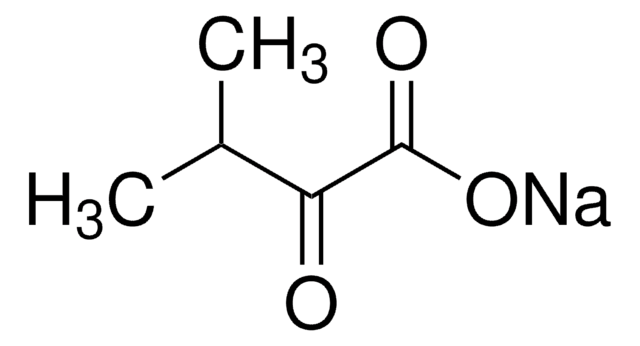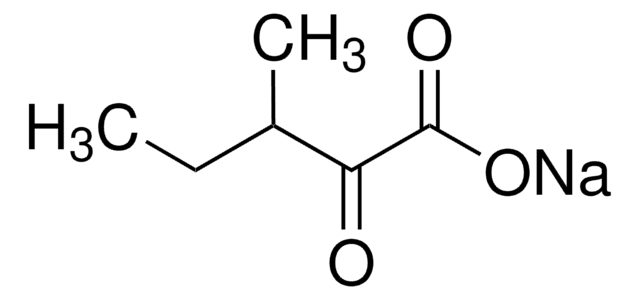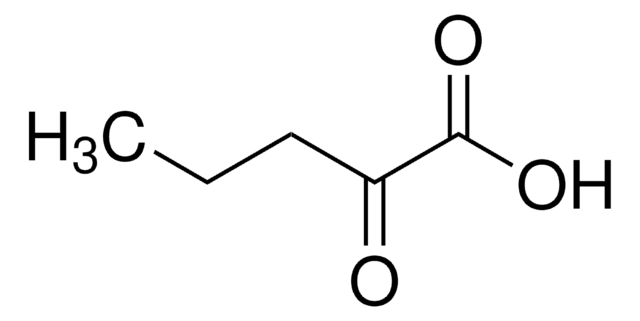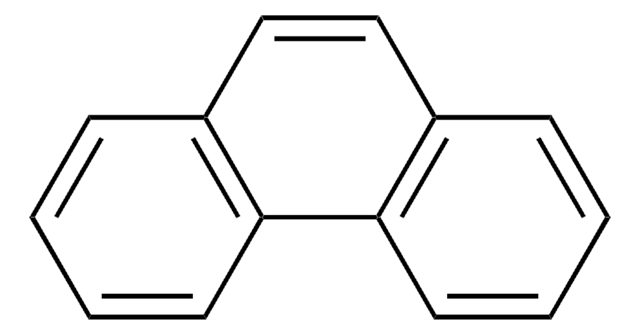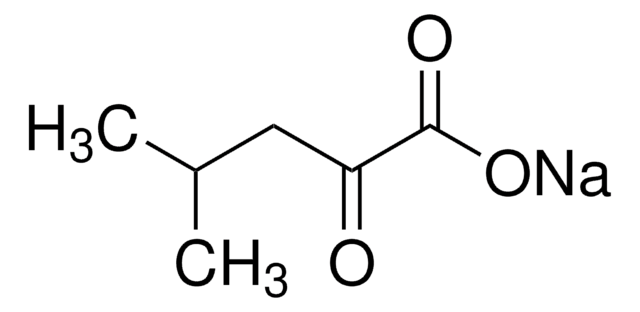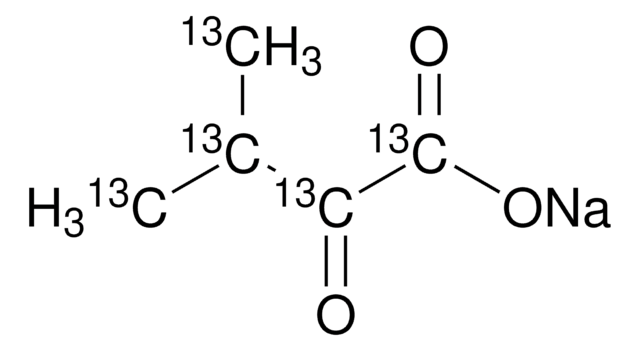68255
4-Methyl-2-oxovaleric acid
≥98.0% (T)
Synonym(s):
α-Ketoisocaproic acid, 2-Oxoisocaproic acid, 4-Methyl-2-oxopentanoic acid, Ketoleucine
About This Item
Recommended Products
Assay
≥98.0% (T)
refractive index
n20/D 1.431
bp
82-83 °C/11 mmHg (lit.)
mp
8-10 °C
density
1.055 g/mL at 20 °C (lit.)
functional group
carboxylic acid
storage temp.
2-8°C
SMILES string
CC(C)CC(=O)C(O)=O
InChI
1S/C6H10O3/c1-4(2)3-5(7)6(8)9/h4H,3H2,1-2H3,(H,8,9)
InChI key
BKAJNAXTPSGJCU-UHFFFAOYSA-N
Looking for similar products? Visit Product Comparison Guide
Related Categories
General description
Application
- Role in Human Brain Ketometabolism: 4-Methyl-2-oxovaleric acid has been implicated in the temporal patterns of ketometabolism in cerebral microdialysis fluids of patients with traumatic brain injury, underscoring its significance in biochemical pathways within the brain (Eiden et al., 2019).
Signal Word
Danger
Hazard Statements
Precautionary Statements
Hazard Classifications
Skin Corr. 1B
Storage Class Code
8A - Combustible corrosive hazardous materials
WGK
WGK 3
Flash Point(F)
Not applicable
Flash Point(C)
Not applicable
Personal Protective Equipment
Choose from one of the most recent versions:
Already Own This Product?
Find documentation for the products that you have recently purchased in the Document Library.
Customers Also Viewed
Our team of scientists has experience in all areas of research including Life Science, Material Science, Chemical Synthesis, Chromatography, Analytical and many others.
Contact Technical Service